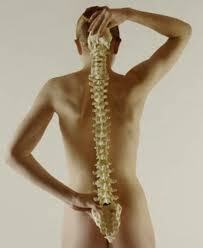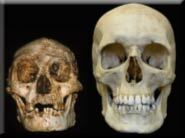Niemann-Pick disease: what is it, causes, symptoms, treatment, prognosis
Content
- What is Niemann-Pick disease?
- Classification
- Signs and symptoms of Niemann-Pick disease
- Niemann-Pick disease, type A
- Niemann-Pick disease, type B
- Causes of Niemann-Pick disease
- Affected populations
- Similar disorders
- Diagnostics
- Treatment for Niemann-Pick disease
- Forecast
What is Niemann-Pick disease?
Niemann-Pick disease (RBN, acid sphingomyelinase deficiency) is a rare progressive genetic disease belonging to the group lysosomal storage diseaseswhich results from a deficiency of the enzyme acid sphingomyelinase, which is necessary for the breakdown (metabolism) of a fatty substance (lipid) called sphingomyelin. Consequently, sphingomyelin and other substances accumulate in various tissues of the body (liver, spleen, brain, bone marrow).
Niemann-Pick disease is highly variable, age of onset, specific symptoms, and severity disorders can vary greatly from one person to another, sometimes even among members of one families.
This disorder is best viewed as a spectrum of diseases. At the severe end of the spectrum is a fatal neurodegenerative disorder that manifests itself in infancy (Niemann-Pick disease type A [NNPA]). At the soft end of the spectrum, sick people have no or only minimal neurological symptoms, and patients who survive to adulthood are common (Niemann-Pick disease type B [NNPV]). There are also intermediate forms of the disorder. RBN is caused by mutations in the gene
SMPD1 and is inherited in an autosomal recessive manner.Classification
There are three disorders known as Niemann-Pick disease, types A, B, and C. These disorders were initially grouped due to similar symptoms, but now it has become known that they are different diseases. BNP types A and B are caused by mutations in the gene SMPD1that cause a deficiency of a specific enzyme, acid sphingomyelinase. Niemann-Pick disease type C is caused by mutations in one of two different genes and does not contain the deficient enzyme. According to the application NORD BNP type C is currently considered a distinct disease from BNP types A and B.
BNP is traditionally divided into two subgroups:
- neuronopathic (type A);
- non-neuropathic (type B).
Neuronopathic refers to disorders that damage brain cells (neurons). Type A usually causes serious neurodegenerative disease in infancy, while type B usually not considered a neurological disorder. However, because cases fall between these two extremes, such broad designations can be misleading. Some researchers use type B disease to refer to all mild and intermediate forms of the disease that may have neurological results.
Signs and symptoms of Niemann-Pick disease
Because Niemann-Pick disease is a highly variable disorder, it is important to note that affected individuals will not have all of the symptoms described below and that each case is unique. Some children develop severe, life-threatening complications early in life; others have a mild illness that may not be diagnosed until adulthood. Parents should talk to their child's doctor about specific symptoms and general prognosis.
Niemann-Pick disease, type A

The severe, infantile form of BNP, known as type A, can be distinguished from the milder forms that appear later. The primary symptom in most childhood cases is abnormal enlarged liver and / or spleen (hepatosplenomegaly), which may progressively worsen while liver and spleen will not become massive. There can also be a significant accumulation of fluid in the abdominal cavity (ascites). During the neonatal period, yellowing of the skin and sclera of the eyes (jaundice).
Additional symptoms during infancy include:
- nutritional problems;
- constipation;
- nausea;
- vomiting;
- gastrointestinal reflux;
- irritability;
- loss of reflexes;
- progressive loss of muscle tone (hypotension).
Read also:Bulbar and pseudobulbar syndrome: what is it, photos, causes and treatment of the disorder
Nutritional problems and other abnormalities (such as frequent vomiting) can lead to a failure to develop healthy.
Accumulation of sphingomyelin in the lungs can lead to recurrent respiratory infections and difficulty breathing, potentially leading to life-threatening pulmonary insufficiency.
Most babies develop a condition known as Peak spots (cherry red spots on the eyes). Cherry-red spots affect the macula, an area of the retina that contains the light-sensitive cells needed for central vision. It is usually yellow. Peak spots are not always present in affected individuals.
Achievement of milestones and general development may be normal in the first few months. However, development is often difficult between the ages of 3 and 12 months, and affected children lose previously acquired motor skills. Affected children may experience profound neurological deterioration, increased muscle tone and muscle stiffness (spasticity), and by age 3 the disease is often fatal.
Niemann-Pick disease, type B

People with advanced BNP can develop symptoms both in infancy and adulthood. Sometimes these forms are collectively referred to as type B Niemann-Pick disease; they are generally weaker than type A BNP (infantile form). People with mild forms may live to late adulthood, and some may remain undiagnosed into adulthood. Type B Neman-Pick disease is associated with a systemic disease that can vary greatly in severity and prevalence.
Hepatosplenomegaly is a common initial symptom and can range from mild to severe organ enlargement. Progressive enlargement of the spleen may cause low platelet and white blood cell counts. White blood cells (leukocytes) help fight infection, and a reduced number of these cells can make an affected person susceptible to infection. Platelets are specialized blood cells that allow the body to clot and stop bleeding. Decreased platelet count, known as thrombocytopenia, can lead to episodes of prolonged bleeding.
An enlarged liver and spleen can result in abdominal pain. An enlarged spleen is at risk of rupture, which can lead to life-threatening bleeding into the abdomen.
Most people with type B disease have some degree of liver disease. Most have abnormal liver blood tests and liver scarring. Scarring can range from mild without symptoms to overt cirrhosis and liver failure.
Some people experience a gradual deterioration in lung function. For some people, lung damage may be mild with no noticeable symptoms. Some people may have difficulty breathing during exercise (shortness of breath). Other people may experience permanent deterioration in respiratory (lung) function with severe limitations in activity levels and oxygen dependence. Recurrent pneumonia.
People with late childhood LBP usually do not develop neurologic symptoms, but may develop mild symptoms, or, in rare cases, clinically significant neurological symptoms. Some affected children and adolescents may develop:
- rapid involuntary eye movements (nystagmus);
- juniper disorders, which include erratic gait and clumsiness.
There are also no intellectual disabilities and mental disorders. You may experience:
- retinal abnormalities;
- abnormalities of the nerve-rich membrane lining the back of the eyes;
- peripheral neuropathy.
Peripheral neuropathy is a general term for any disease that affects nerves outside the central nervous system. Common symptoms include loss of sensation or the occurrence of unpleasant sensationssuch as itching, burning, or tingling along the affected nerves.
Read also:Guillain-Barré Syndrome (GBS)
Most affected children have stunting and light weightalthough most eventually reach near-normal growth by adulthood. Delayed puberty and skeletal maturation can also occur. Most people have osteopenia (thinning of the bones).
A common finding in affected individuals is abnormal serum lipid levels (dyslipidemia), especially low levels of high-density lipoprotein (HDL-cholesterol, also known as "good cholesterol"), high low-density lipoprotein (LDL-cholesterol, also known as "bad cholesterol") concentrations and high triglyceride levels (hypertriglyceridemia).
Affected people may be at risk for coronary artery disease in the early stages.
Causes of Niemann-Pick disease

Niemann-Pick disease is caused by a mutation in a gene sphingomyelin phosphodiesterase-1 (SMPD1). Genes provide instructions for making proteins that play critical roles in many bodily functions. When a gene mutation occurs, the protein product may be defective, ineffective, or missing. Depending on the functions of a particular protein, it can affect many organ systems in the body, including the brain.
Gene SMPD1 located on the short arm (p) of chromosome 11 (11p15.4). Chromosomes, which are present in the nucleus of human cells, carry the genetic information of each person. The cells of the human body usually have 46 chromosomes. Pairs of human chromosomes are numbered 1 through 22, and the sex chromosomes are labeled X and Y. Men have one X and one Y chromosome, while women have two X chromosomes. Each chromosome has a short arm, labeled "p", and a long arm, labeled "q".
Gene SMPD1 creates (encodes) an enzyme known as acid sphingomyelinase. A mutation in this gene results in insufficient levels of functional copies of the acid sphingomyelinase enzyme. This enzyme is required for the breakdown (metabolism) of certain fatty substances (lipids) in the body. A decrease or lack of enzyme activity leads to abnormal accumulation of sphingomyelin in various tissues of the body. Sphingomyelin Is a fatty substance that is a component of most cell membranes. The abnormal accumulation of sphingomyelin in certain body tissues causes the signs and symptoms of Niemann-Pick disease.
Niemann-Pick disease Is a genetic disorder that is inherited from parents and may be present in other family members. In general, humans receive two copies of most genes, one inherited from the mother and the other from the father. Recessive genetic disorders, such as Niemann-Pick disease, occur when a person inherits changes or mutations in both copies of a particular gene (in this case SMPD1 gene.).
If a person receives one normal copy of a gene and one altered copy, the person will carry the disease but show no signs of the disease. The risk for two carrier parents to pass on a defective copy of the gene and therefore conceive a sick child is 25% in every pregnancy. The risk of having a child who will be a carrier, like a parent, is 50% for each pregnancy. The chance for a child to receive normal copies of the gene from both parents and not be sick or carry this particular mutation is 25%. The risk is the same for both men and women.
Affected populations
BNP affects men and women in equal amounts. The exact incidence and prevalence of this disease is unknown, but it is estimated to be 1 in 250,000 in the general population. However, due to the fact that some cases are misdiagnosed or not diagnosed at all, it is difficult to determine the true incidence of the disease in the general population. The severe infantile form (type A) can affect various ethnic groups, but is more common in persons of Jewish origin. Later forms (type B) can affect all ethnic groups.
Read also:Peripheral neuropathy
Similar disorders
Symptoms of the following disorders may be similar to those of BNP. Comparisons can be useful for differential diagnosis.
There are several types of metabolic disorders in which there is a secondary accumulation of certain substances, such as fats and carbohydrates, including mucopolysaccharidoses (a group of metabolic diseases of the connective tissue) and others lysosomal storage diseases. These disorders include:
- galactosemia;
- galactosialidosis;
- sialidosis;
- Niemann-Pick type C disease;
- Gaucher disease;
- Wolman's disease.
Diagnostics
The diagnosis of the disease is based on the identification of characteristic signs, a detailed medical history, careful clinical assessment, and a variety of specialized tests.
Treatment for Niemann-Pick disease
Treating Niemann-Pick disease may require a coordinated team of specialists. Pediatricians, neurologists, hepatologists, ophthalmologists, and other healthcare professionals may need to systematically and comprehensively plan the child's affective treatment. Psychosocial support for the whole family is also important. Genetic counseling can be beneficial for affected individuals and their families.
Modern therapies target the specific symptoms that each person experiences. In the case of BNP type A, physical and occupational therapy and periodic nutritional assessment may be recommended. A feeding (gastronomic) tube may need to be implanted to ensure proper nutrition. In this procedure, a thin tube is placed into the stomach through a small incision in the abdomen, allowing food and / or medicine to be taken directly. Sleep problems associated with the disorder can be treated with overnight sedatives.
Some adults with type B disease may need treatment for dyslipidemia (changes in cholesterol and / or triglyceride levels). Nutritional support is also recommended for people with type B disease to ensure adequate intake of calories, proper intake of calcium and vitamin D due to the risk of osteopenia and reduce the risk of dyslipidemia in adults.
People with type B Niemann-Pick disease who have prolonged bleeding caused by thrombocytopenia may need a blood transfusion. Individuals with lung disease may require assisted oxygen therapy. People with an enlarged spleen are advised to avoid contact sports to avoid rupture of the spleen. Adults with hyperlipidemia must control cholesterol levels. Cases of liver transplantation have also been reported in some adults with hepatic impairment caused by BNP type B.
Forecast
Niemann-Pick disease type A is fatal in early childhood. The clinical presentation and course of BNP type A is relatively homogeneous and characterized by the normalcy of the child at birth, accompanied by progressive hepatosplenomegaly from 3 months and severe neurodegenerative course, leading to death by 3 years.
In contrast to the stereotypical type A phenotype, the clinical presentation and course of patients with BNP type B disease are more variable in terms of clinical findings, age of onset, and severity of symptoms. Most patients are diagnosed in infancy or childhood when an enlarged liver and spleen are found during a routine physical examination. With this type of disease, children live to adulthood.
A child with type C symptoms under 1 year of age (although it is dr. disease) may not live up to school age. Those who develop symptoms after entering school may live in adolescence. Some may live in their 20s.



